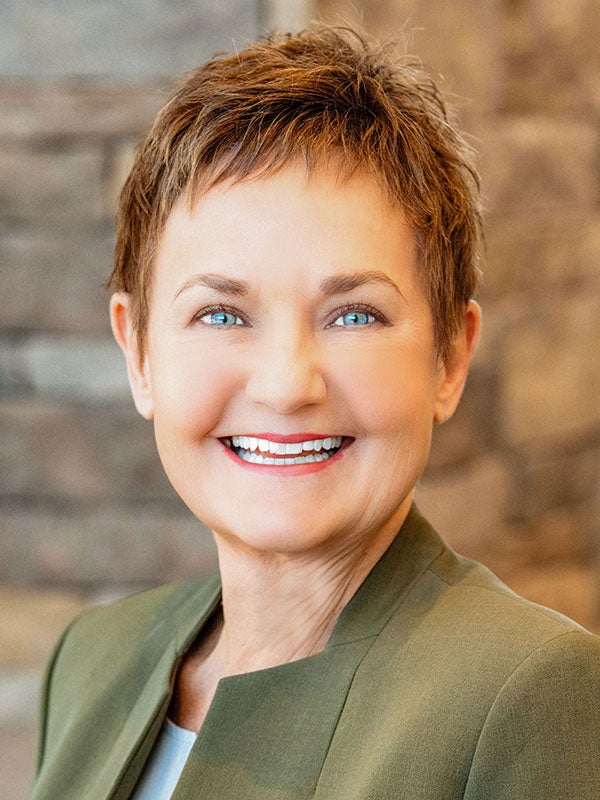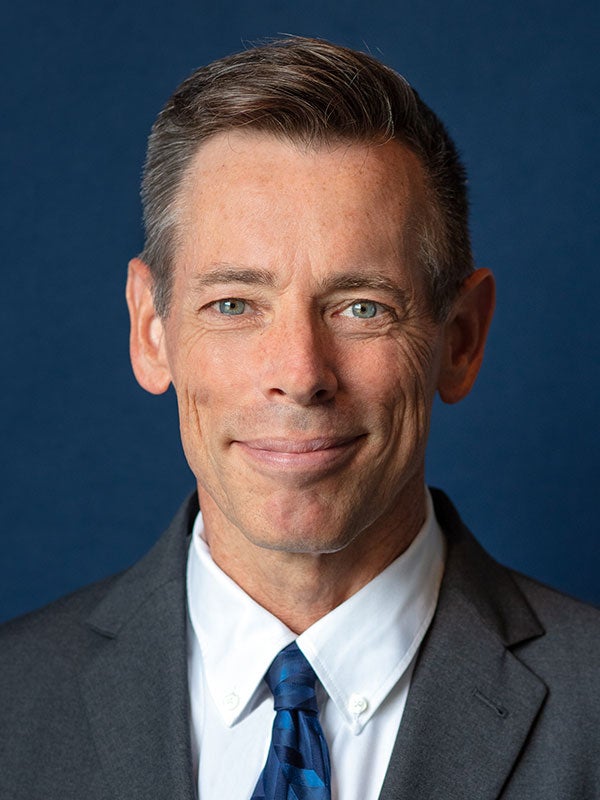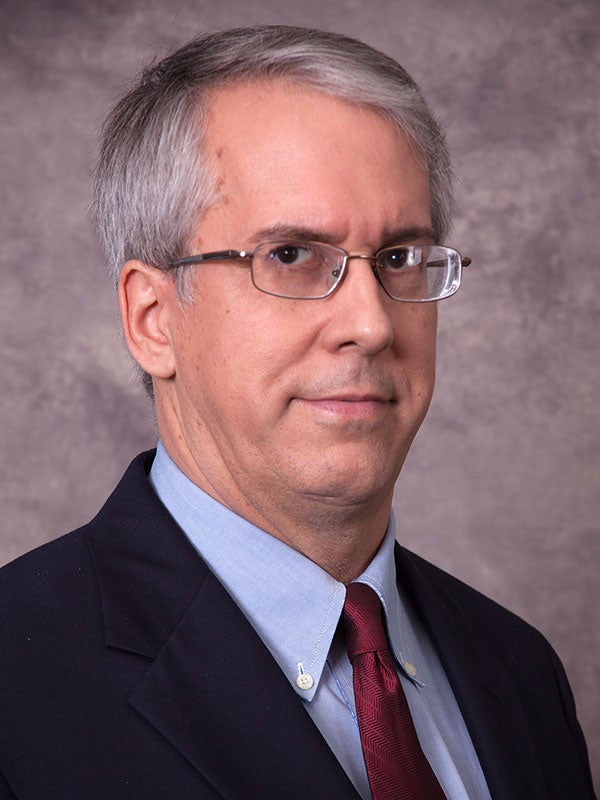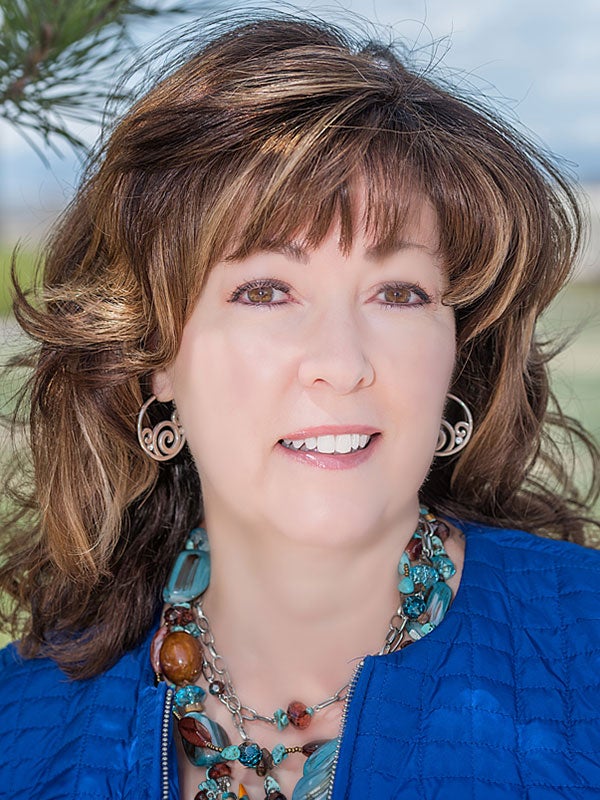
Transforming Governance
What’s on the Minds of Board Leaders?
Handing over the mic to four board chairs
by Kara Witalis
In the fading exhaust of the past few tumultuous years, 2024 is a period that, while undoubtedly challenging, also carries great opportunity for those entrusted with steering their organizations into a future ripe with promise and potential.
To be sure, no matter their size or where they provide services, hospitals and health systems confront both enduring and emerging obstacles —; from financial strains and accessibility concerns to evolving technology and disruptive competitors. Yet standing before these difficulties are board leaders with unwavering compassion, dedication and determination to address head-on the hurdles faced by their organizations. What are the topics on boardroom agendas, and what inspires board chairs as they chart the course ahead?
In this article, we hand the mic over to four board chairs from across the country to hear what’s on their minds as it pertains to the opportunities and challenges for the current and future state of health care, as well as the nuts and bolts of governance and leadership.

Marilyn Helms
Board Chair
CHI Memorial Board of Directors
Chattanooga, Tenn.
CHI Memorial is a not-for-profit, faith-based health care organization providing health care throughout southeast Tennessee and north Georgia. CHI Memorial was founded by the Sisters of Charity of Nazareth and is a part of CommonSpirit Health, a national health care ministry that shares the Sisters of Charity mission, vision and values. CHI Memorial provides a range of health care services including preventative, primary and acute care; cancer, cardiac and neurosciences care; and orthopedics and rehabilitative care.
Marilyn Helms, DBA, joined the CHI Memorial Board of Directors in 2017. She has served in the role of board chair since the summer of 2023. Helms is the dean and sesquicentennial chair and professor of supply chain management at Dalton State College’s C. Lamar and Ann Wright School of Business in Dalton, Ga. She frequently speaks to groups regarding international business, entrepreneurship, strategic planning and supply chain management.
Kara Witalis: What are the core opportunities for health care of the future? What are you particularly excited about when envisioning the future of health care?
Marilyn Helms: I see our greatest opportunity for the future of health care as being the promise of technology. We will see a furtherance of the electronic health record as it continues to enable us to improve outcomes of care (through improved access to information, protocols, etc.), improve quality and safety, and increase reliability. We will also see advances in and increased use of telemedicine in which patients and providers won’t have to leave home to receive care. This is a huge satisfier all around. People don’t want to wait in an office waiting room or deal with traffic and parking if they can avoid it by using telemedicine. With telemedicine, we can have access to services and professionals that might otherwise be unavailable. With artificial intelligence (AI) advancements we will be able to turn routine tasks over to AI, safely and reliably, and free up our scarce, specialized personnel to handle the higher learning and critical thinking. With the right application of AI in health care, we can extend our staffing resources.
The opportunity doesn’t stop with technology, but rather uses technology to help extend the human side of health care. We have an opportunity to inspire people to get into the health care field — to see that there are many different career opportunities in the health care setting. It’s not all doctors and nurses who are needed, but also accountants, food service, facilities management and purchasing staff, as well as so many other career opportunities that are available.
Witalis: What are the core challenges of today’s health care environment?
Helms: The core challenge is economics, starting with reimbursement. The Centers for Medicare & Medicaid Services’ (CMS) payment formula is outdated. Their use of geographically adjusted indexes for reimbursement calculations just simply doesn’t work in today’s world in which we are all recruiting nationally, using national, if not global, suppliers and vendors. No matter where you’re located in the country, you’re paying national not regional prices. We are also seeing an uptick in insurance denials for care or outright limiting access to patient care, which delays a patient receiving the services that they need, which spirals into a bigger problem.
Costs are rising across the board, but primarily relating to staffing costs. We are all competing for talent from a scarce, national base. We used remote and traveling nurses during COVID-19, which drove prices up. We are challenged with filling staff vacancies, keeping people in the field and recruiting students into the profession. Much of the issue is that the pathway for career training and placement for rotations is blocked. We don’t have enough faculty and supervisors to support the trainees.
Witalis: What do you struggle with the most in leading fellow trustees, supporting CEOs and fulfilling the mission of the organization?
Helms: We are a faith-based organization with strong mission integration into everything that we do, starting with the board of directors. That said, health care is a complex industry, which could reasonably take years to understand. This is sometimes intimidating for new board members who feel that they, perhaps, don’t have the industry expertise to contribute.
Witalis: What advice would you give a new board member to help them be as effective as possible in the role?
Helms: My advice to new board members is to speak up, share your voice, your experiences and perspectives. Don’t be afraid to raise your hand, ask questions and test assumptions. Get involved in the discussion and debate. I remind our board members that you’ve been selected to serve for a reason and to lean on your own experiences and expertise, which can be applied to the hospital industry. Many different industries have similar challenges to tackle. What’s most important is that board members come together, sit beside one another, break down barriers, think together and be advocates for the community.

Gary Renville
Board Chair
Pacific Medical Centers Community Board of Directors
Seattle
Pacific Medical Centers (PacMed) has been providing health care to residents in the Puget Sound region of Washington for more than 90 years. Today, PacMed is a multispecialty medical group that operates nine clinic locations with over 160 providers. Additionally, for over 30 years, PacMed has been one of six TRICARE® Designated Providers in the country selected by the U.S. Department of Defense to administer the U.S. Family Health Plan providing care to military personnel and their families. PacMed is affiliated with Providence health system and is governed by a 15-member community board.
Gary Renville joined the PacMed Community Board of Directors in 2020. He has served in the role of board chair since the fall of 2022. Renville is president and CEO of Project Access Northwest, a nonprofit organization dedicated to transforming access to health care in Washington. Project Access Northwest provides those who are uninsured or underinsured access to donated specialty medical and dental care and to donated behavioral health care so they can live healthier and more productive lives.
Witalis: What are the core opportunities for health care of the future? What are you particularly excited about when envisioning the future of health care?
Renville: Community-based partners, including Project Access Northwest, interface with PacMed, and other patients every day, responding to the challenges of daily life access that include but are not limited to access to healthy food, safe housing and financial security. These organizations are addressing the factors that ultimately influence the long-term health of a community. When aligned with exemplary health care services, like those found at PacMed, and getting people access to high quality health care with the right provider at the right time, the collaboration can yield innumerable benefits that strengthen people, families and the communities in which they live. It is this opportunity for collaboration resulting in life-changing, and often lifesaving, care that excites me most when envisioning the future of health care.
The core opportunity for health care within PacMed remains to hold true to our mission, no matter the changes in the political, economic, competitive markets. As board members, we are to focus the organization on the mission, to look at and promote the right patient experience and engagement. That’s the North Star for health care and guides everything we do — to advocate, educate and provide extraordinary care — all of it is designed to improve the health of our community and to improve health care experience and engagement. And if we’re to truly move the needle, we need to first lean into the importance of health equity and access to address disparities and social drivers of health. The work is to remove barriers, build the right infrastructure, bring together groups and resources, establish policies and prioritize those who serve the underserved. The goal, of course, is to improve health outcomes for patients and communities, and to raise the tide for all without leaving any behind.
Witalis: What are the core challenges of today’s health care environment?
Renville: There is no short list of challenges in health care. In no particular order, I would suggest a few core challenges. The rising cost of health care for patients and providers is untenable. It’s unsustainable. There are a number of factors going into this — drug prices, infrastructure, the aging population, technology and other investments, and so much more. For patients, we need to influence policy and systems changes that end medical debt that keeps people from seeking the care they need when they need it.
Combine the rising tide of costs with low Medicaid reimbursement. We need to advocate and push our elected leaders to change those rates, to raise the rates to a level of fairness, at least to cover the costs.
Of course, core to everything is our people and the challenge of attracting and maintaining a dedicated workforce. We have to care for our people so that they can care for us.
The approach to value-based care is both an opportunity and challenge. The opportunity is to focus on providing effective, high value care that seeks to keep populations and patients well. The challenge is that to achieve this, we need to put into place new ways of thinking and doing, different models, new infrastructure and systems, all of which cost money. This is a long-term solution and longer-term strategy.
Witalis: What do you struggle with the most in leading fellow trustees, supporting CEOs and fulfilling the mission of the organization?
Renville: Health care is a really complicated and complex industry, and we’ve gone through massive struggles and changes in recent years. It’s easy to feel entrenched. Workplace and executive burnout put against the recognition of a shortage of health care professionals adds to the strain.
I think it’s important to start from a place of empathy and to appreciate that everyone has their own experiences. Seek to lead with empathy in building our relationships with each other, with our staff and leaders, our patients and communities and to define what the experience together means for health care today and the future.
As fellow trustees, we need to let our executives know that they don’t have to go down the road alone, that they can lean on us for a shoulder of support and for an important community voice that provides unique perspective and strategic input.
Witalis: What advice would you give a new board member to help them be as effective as possible in the role?
Renville: You don’t have to be a health care expert to be a great board member and leader, but you do need to have a passion for the work. Lean into your own experiences and openly share those experiences with board colleagues. I encourage board members to embrace continual learning about the health care system in general but also about your own communities and about your organization. Listen to leadership and experts and be committed to striking down barriers and obstructions to fulfill the missions and serve those in need.
Also, think big picture and remain mission-focused and avoid becoming too tactical or focused on small details. Take a proactive approach to policy development and enforcement and in doing so, build trust among stakeholders and improve the organization’s effectiveness. Be committed to learning, practicing and growing through a diversity, equity and inclusion lens.

Jan van den Blink
Board Chair
Arnot Health Board of Directors
Elmira, N.Y.
Arnot Health is a health care system serving an eight-county region across southern New York and northern Pennsylvania. The system offers a full range of health care services including hospital-based, primary and specialist care and includes three hospitals, multiple clinic locations and a 270-member multi-specialty group practice.
Jan van den Blink joined the Arnot Health Board of Directors in the summer of 2015. He became vice chair in 2019 and has served the role of board chair since 2022. Van den Blink is third generation owner of Hilliard Corporation based in Elmira, N.Y., which employs more than 500 people.
Witalis: What are the core opportunities for health care of the future? What are you particularly excited about when envisioning the future of health care?
Van Den Blink: For our organization, the biggest opportunity is to improve the experience of everyone — patients, providers, communities — through improved efficiency and quality.
Specifically, Arnot Health is implementing the Epic electronic health record software. We are positive that Epic will have huge benefits in terms of quality, efficiency and reimbursement. Historically, we’ve had multiple independent, disparate software programs that are not coordinated and interoperable. With Epic, all the patient information will be together in one system. This will help immensely by simply having access to the right information, helping avoid or minimize errors, reduce delays in care and improve access by allowing patients to schedule directly. This will reduce the need for patients to leave the area to receive care. We also anticipate Epic to help with billing and collections by reducing denials and appeals and getting bills out quicker.
We are just at the beginning of the Epic journey but are very excited about the possibilities.
Witalis: What are the core challenges of today’s health care environment?
Van Den Blink: First is reimbursement. The patients that we serve are heavily weighted to government insured, not private insured. That’s a reality of our geography — that’s just who we are in this community. The hospital can’t change that reality. Yet, it’s tough to financially survive on what the government pays for patient care. On top of that, changes in payment for other government sponsored programs hit hard for us. The shrinking of the 340B pharmaceutical discount program was a big hit to our organization.
Another core challenge is the workforce. We all know that there is a shortage of front-line health care folks. Doctors and nurses are stressed; they’re leaving the field altogether, and they aren’t going into this industry. We’ve had to rely on agency travelers, and they’re not cheap. We have a health care college in our community, which is a bit of a feeder for us, but there is never enough. Add to this the mandatory staff levels. We meet these requirements, but it’s hard.
This leads to another core challenge — access to needed services. We have more patients in need of skilled nursing and mental health services — more than we have the beds or the staff to provide. Demand for care and caregivers greatly outweighs supply. The industry needs to address the fact that we don’t have enough faculty to teach and train — we need more faculty. And on the hospital side, increased costs of the business, inflation, technology costs, infrastructure costs to keep facilities renovated keeps us limited in what we can do to increase supply. It’s a tough industry to be in.
Witalis: What do you struggle with the most in leading fellow trustees, supporting CEOs and fulfilling the mission of the organization?
Van Den Blink: It’s important to support the CEO to handle big issues as best as they can. For example, during COVID-19, Arnot Health was in the forefront of providing vaccines in our community — we were the leader in setting up vaccine sites, the public health campaigns, working with the community to educate and meet people where they are. But, at the same time, financially we were really suffering. Elective surgeries and procedures stopped; people were less willing to come in for routine care.
During this time, as board members, we were cheerleaders for our management and providers. We trusted them to do what was needed. At the same time, we were meeting regularly with management to be sure that they had what they needed from us, that we could help think through solutions together to help remove barriers.
Beyond that, we believe that many of the fixes to the core issues — fair reimbursement by the government, workforce supply and training, market dynamics, and supply and demand — have got to be legislative. Our CEO is in frequent touch with our federal and state representatives, including Sen. Chuck Schumer, Sen. Kirsten Gillibrand, State Sen. Tom O’Mara, and New York state assembly members Phil Palmesano and Christopher Friend, on these and other policy issues. A few of our board members have gone to Albany during general session to advocate on the behalf of Arnot Health and our communities. As board members, we need to be advocates for health care, which includes educating policymakers on the issues that impact our ability to care for our communities.
Witalis: What advice would you give a new board member to help them be as effective as possible in the role?
Van Den Blink: As a board member, you would be well advised to get educated. Even if you have some idea about health care, you need a lot of education. We have a board director orientation program that gives new board members the basics of what Arnot Health does for the communities that we serve. But beyond that, board members also really need education on the bigger picture of health care, the landscape, regulation, insurance, changes in the market. This industry is just so different from anything else.

Dana Talarico
Board Chair
St. Anthony Regional Board
(St. Anthony Hospital, Lakewood, Colo., and St. Anthony North Hospital, Westminster, Colo.)
St. Anthony Regional Board serves as the regional board for St. Anthony Hospital and St. Anthony North Hospital, which are managed by CommonSpirit Health and governed by a community board of trustees. In 2009, Talarico was honored to be appointed to the St. Anthony North Hospital Board of Trustees and became board chair in 2011, a role she continues today. Talarico is president of The Talarico Company, a woman-owned real estate development and brokerage business.
Witalis: What are the core opportunities for health care of the future? What are you particularly excited about when envisioning the future of health care?
Talarico: I am most excited about the renewed sense of purpose in our mission. The mindfulness of our chief executives and leadership team is particularly forward thinking. We are coming out of COVID-19, in which we needed to focus on the immediate term, to a renewed sense of contemplating and reimagining the future — what do our communities really need, how do we sustainably grow, how do we pursue our mission in a safe, quality, effective way within the capital constraints of today?
CommonSpirit is a faith-based organization. We are mission driven and have a deep desire to not abandon anyone. Our ability to serve the communities and patients with a new focus on migrant care is emblematic of this commitment.
Witalis: What are the core challenges of today’s health care environment?
Talarico: We are focused on serving — the healing ministry of Christ and being able to serve everyone. But, at a corporate level, how do we honor the needs, our mission, while balancing the economics and the nature of competitiveness? Of course, we understand the adage — no margin, no mission. We know that we need to be financially sustainable and mindful of costs.
That said, our biggest cost — the biggest challenge — is recruiting and retaining quality staff — nurses, physicians, technicians — across the board. This is a national issue, and as such, everyone is competing on a national field and paying national rates. The “local market” economics don’t resonate in this space — it’s a national market where the top dollar wins. We need to be mindful of offering opportunities within all staffing needs that are beyond pay. There is a sense of community, and our hospitals lead the message with their commitment to quality, safety and opportunity.
Witalis: What do you struggle with the most in leading fellow trustees, supporting CEOs and fulfilling the mission of the organization?
Talarico: As an organization, and certainly at the board level, we are committed to diversity. We look for different perspectives and experiences to help round out our thinking and solutions. On our board, we have religious professionals, we have people from big business, we have folks from both inside and outside health care with various levels of understanding, different perspectives.
As individuals and in their unique industries, our board members are dealing with similar challenges as we are in health care — growth in the markets, migrant populations, aging population, the impacts of economics, inflation and poverty. At our board table, these are broader conversations where we all bring our experiences, perspectives and solutions.
As board chair, I am continuously working to encourage the board members to share their differences and expertise, but also to maintain a focus on our shared purpose. We have a shared humanity despite the various organizations we may work in and the experience this may bring to the meeting.
Witalis: What advice would you give a new board member to help them be as effective as possible in the role?
Talarico: Health care is an extremely complicated industry. It’s going to take a year or longer to understand the industry and your role and value in the board seat. We stick to the governance rule — “Nose in Fingers out” — you can stick your nose into management business but keep your fingers out of it. As board members, our role is to remain at a governance level. Our CEOs and administrators were hired to do a job based on their own personal experience and leadership capabilities.
The advice I give is to take part in the learning opportunities where available. Learn as much about the industry, your organization, your community’s health as possible. Get involved; see how the sausage is made.
During board member orientation, we discuss and set the expectations of new board members. We express an appreciation for their talents and commitment, but also clearly explain the role of a board member as a steward of the organization and community asset, leaving egos and opinions at the door, and being prepared to serve and guide.
Kara Witalis, MHA, (kwitalis@viahcc.com) is principal, Via Healthcare Consulting, based in Carlsbad, Calif.
Please note that the views of interviewees do not always reflect the views of the AHA.
